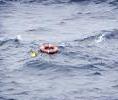
Gulf Shrimping Highest for 2000-2009 Fatalities
CDC's analysis confirms commercial fishing is one of the most dangerous U.S. occupations, recording 504 deaths during the period for an annual fatalities rate of 128 per 100,000 workers -- 32 times higher than the rate for all workers.
Commercial fishing in the United States had an astronomical fatality rate in 2000-2009, the Centers for Disease Control and Prevention confirmed by analyzing every reported death in the industry during those years. Its report in the July 16 MMWR shows several fisheries had very high rates -- the Northeast groundfish fishery's was 600, the Atlantic scallop fleet's 425, and the West Coast Dungeness crab fleet's 310. But the fishery with the highest number of fatalities during that decade was Gulf of Mexico shrimping, with 55, including 29 workers who died because they fell overboard.
The industry as a whole recorded 504 U.S. commercial fishing deaths, with this breakdown:
- 261 deaths, 52 percent, after a vessel disaster: sinking, capsizing, or a fire where the crew had to abandon ship
- 155 deaths, 31 percent, falling overboard
- 51 deaths, 10 percent, from an injury suffered on board
- 37 deaths, 7 percent, while diving or on shore
While severe weather contributed to 61 percent of the 148 fatal vessel disasters, strikingly, not one of the 155 crew members who died from falling overboard was wearing a personal flotation device (PFD), CDC reported.
The agency decided to evaluate the industry because its 2008 recommendations based on a review of West Coast and Alaskan fisheries' deaths brought about stricter Coast Guard safety guidelines, increased training, and a rebate program for crew members to buy PFDs. Some progress has been made in those fisheries, but it is too early to determine the recommendations' impact, CDC said.
Crew members are not required by law to wear a PFD while working on deck, the article points out, adding that increasing industry awareness and use of PFDs (including new styles that are integrated into work clothes) and fall-overboard alarms probably would reduce the risk for death. PFD use also would increase survival rates in incidents where a vessel rapidly capsizes or immersion suits are not accessible (i.e., in a skiff), according to the article.